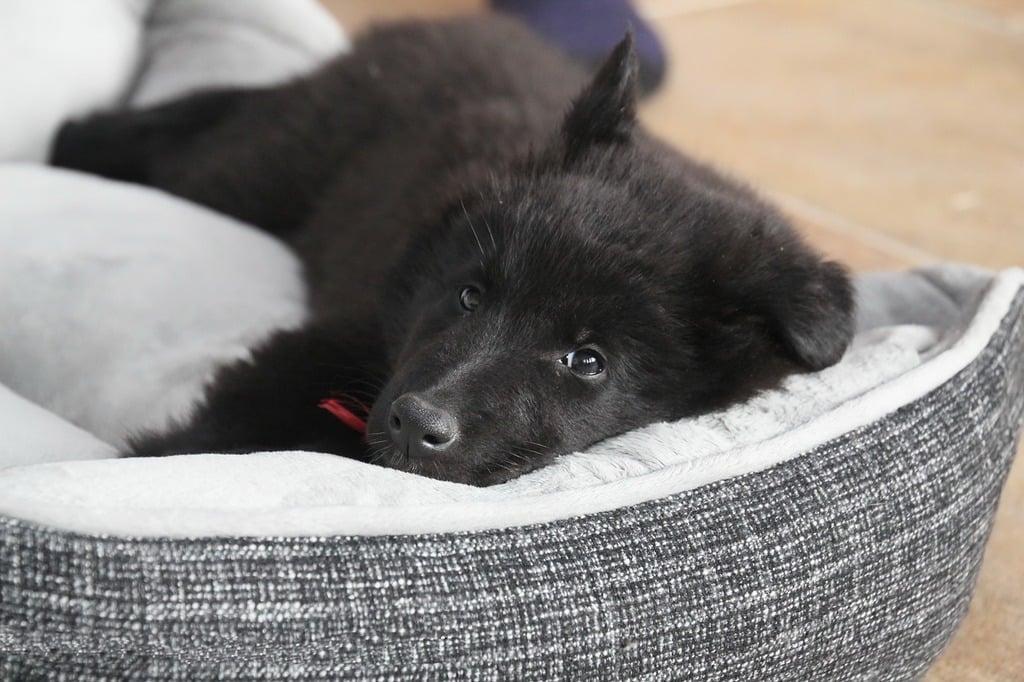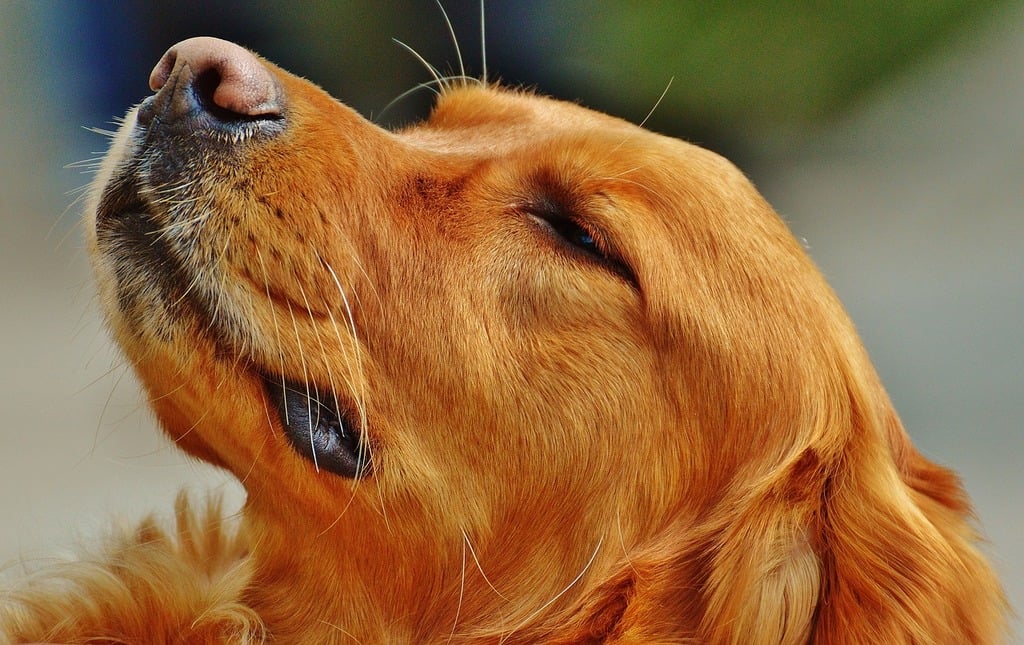The sight of a dog seemingly dozing with one eye slightly ajar, a sliver of eyeball visible beneath a partially closed lid, is a phenomenon that often elicits a mixture of amusement, curiosity, and sometimes, a touch of concern from pet owners. While it might appear as if your canine companion is engaging in a peculiar form of surveillance, this intriguing behavior, often summarized by the phrase “Why Your Dog Sleeps With One Eye Open (Literally!)”, is far from a mere quirk. Instead, it represents a fascinating and deeply ingrained survival trait, a lingering evolutionary echo from their wild ancestry that continues to manifest in certain breeds and individuals even in the comfort and security of a modern home. This isn’t just about a dog being a light sleeper; it’s about a sophisticated, neurological adaptation that allowed their ancestors to balance the critical need for rest with the ever-present imperative of vigilance in a potentially hostile environment.
At the heart of understanding “Why Your Dog Sleeps With One Eye Open (Literally!)” lies the concept of unihemispheric slow-wave sleep (USWS), a remarkable physiological state in which one half of the brain sleeps while the other remains awake and alert. This phenomenon is most famously observed in aquatic mammals like dolphins and whales, enabling them to surface for air while partially resting. However, it’s also present, to varying degrees, in certain bird species (allowing them to literally “sleep with one eye open” while standing guard in a flock) and, crucially, in some land mammals, including dogs. While dogs don’t typically achieve the profound level of USWS seen in dolphins, where one entire brain hemisphere is in deep sleep, they do exhibit a modified form of it. This partial USWS allows one eye to remain open and reactive to external stimuli, while the corresponding brain hemisphere maintains a degree of wakefulness, constantly processing sensory information from that open eye. The other eye, and its associated brain hemisphere, can enter a deeper state of sleep, allowing for crucial restorative processes.

The evolutionary imperative behind this trait is clear when considering the wild ancestors of domestic dogs, such as wolves. In a pack dynamic, continuous vigilance was paramount for survival. Predators were a constant threat, and opportunities for prey were often fleeting. A wolf that could rest while simultaneously maintaining awareness of its surroundings had a significant advantage. The ability to detect subtle movements, sounds, or changes in scent with one “active” side of the brain, even while the other side was recuperating, meant the difference between life and death. When a wolf pack settles down to rest, individual members rarely enter a completely unresponsive state. Instead, there’s a collective vigilance, and the partial USWS allowed individual animals to contribute to this communal security without fully sacrificing their need for sleep. This trait was particularly beneficial for individuals on the periphery of the pack, or those whose turn it was to be “on watch,” ensuring that even when resting, they could quickly spring into action if danger arose.
So, when you observe “Why Your Dog Sleeps With One Eye Open (Literally!)”, you are witnessing a vestige of this ancient survival strategy. Even though modern domestic dogs are largely safe from predators and have regular access to food and shelter, the genetic programming for this vigilance remains. Certain breeds, particularly those with strong guarding instincts or those closely related to their wolf ancestors, may exhibit this behavior more frequently or prominently. Breeds like German Shepherds, Rottweilers, Doberman Pinschers, and even some hounds known for their alertness might be more prone to this type of partial sleep. However, it’s not exclusive to these breeds; individual temperament and past experiences can also play a role. A rescue dog that experienced trauma or insecurity in its early life might be more inclined to sleep with one eye open as a persistent coping mechanism, even once in a secure home. Similarly, dogs in multi-pet households where they perceive a need to maintain a hierarchical advantage or monitor their surroundings might also exhibit this behavior.
It’s important to distinguish this partial USWS from other reasons a dog might appear to have an eye partially open during sleep. Sometimes, certain brachycephalic (flat-faced) breeds like Pugs or Bulldogs might have eyes that don’t fully close due to their unique facial structure, regardless of their sleep state. This is a structural anomaly rather than a neurological adaptation. Similarly, some dogs might simply have a slight lag in their eyelids, or be in a very light stage of sleep (often referred to as slow-wave sleep, distinct from REM sleep, where most dreaming occurs and muscles are usually relaxed). However, when one eye is distinctly and consistently ajar while the other is fully closed, and the dog is clearly resting, it points strongly to the presence of this ancient survival mechanism.
For a pet owner, understanding “Why Your Dog Sleeps With One Eye Open (Literally!)” can provide valuable insights into their dog’s behavior and well-being. Firstly, it’s a testament to the remarkable evolutionary history embedded within our domestic companions. It’s a living link to their wild past. Secondly, while it’s generally a normal and harmless behavior, it can also be an indicator of your dog’s comfort level and sense of security in their environment. A dog that consistently sleeps with one eye open might, despite appearances, not feel entirely relaxed. This could be due to a new environment, unfamiliar sounds, or a general feeling of insecurity. In such cases, providing a more secluded sleeping spot, reducing ambient noise, or creating a calmer atmosphere might help your dog feel safe enough to enter deeper, more restorative sleep stages with both eyes fully closed. Observe whether the behavior changes when the dog is in a particularly quiet and undisturbed location, or when they are in a familiar and trusted setting.

Furthermore, if you notice your dog consistently sleeping with one eye open and it’s accompanied by other signs of distress, restlessness, or an inability to achieve deep sleep, it might warrant a conversation with your veterinarian. While the behavior itself is often natural, persistent sleep disturbances can impact a dog’s overall health and temperament. Factors such as pain, anxiety disorders, or even certain neurological conditions could potentially interfere with a dog’s ability to relax into full sleep. However, in the vast majority of cases, when your dog is otherwise healthy and content, the sight of one open eye during slumber is simply a fascinating glimpse into the enduring legacy of their wild ancestors, a testament to their inherent vigilance, and a reminder of the extraordinary journey from wolf to cherished family member. It serves as a subtle yet powerful reminder that even in the most domesticated of creatures, the echoes of primal survival instincts continue to shape their behavior in ways we are only just beginning to fully appreciate.
